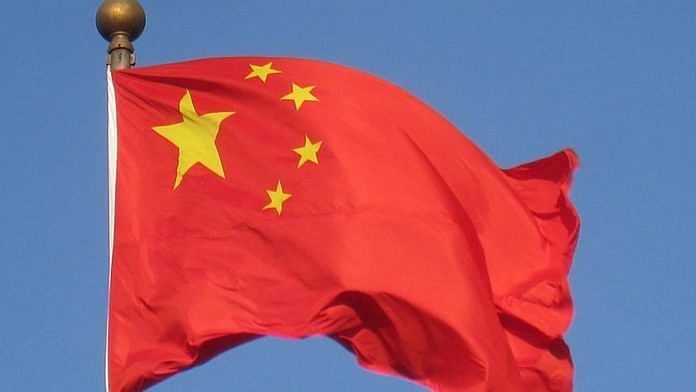New Delhi: Amid rising tension between the United States and China, a new set of satellite images suggest the construction of a nuclear test site in the North-Western province of Xinjiang in an area which has not been permanently inhabited for over a century.
According to a report by Nikkei Asia, a “sixth” nuclear-testing tunnel is in the making, showing that China is further expanding its nuclear-testing facilities.
A satellite, 450 kilometres above Lop Nur, has detected new construction in the area. Lop Nur is a dried salt lake in the heart of the Xinjiang region, and remains one of the most barren areas in China. Xinjiang province is geographically important as it shares borders with Kazakhstan, Kyrgystan, Tajikistan, Afghanistan and Pakistan.
The US-China tensions have hit a new high over House Speaker Nancy Pelosi’s visit to Taiwan, marking the highest level visit by a US official in nearly 25 years. Reports of a potential visit to Taiwan emerged in the media soon after Pelosi began her Asia tour to Singapore, Malaysia, South Korea and Japan. China, on the other hand, has warned the US of counter “resolute countermeasures” if she visited the island.
Concerns around nuclear-test facilities increased after China threatened that its army would not “sit idly by” if Nancy Pelosi went to Taiwan.
China considers the self-governed island its own territory, and while the US does not contest that, it encourages “a robust unofficial relationship” with the island. It also supports Taiwan’s membership in international organisations while China has sought to isolate the island.
The White House, however, has said the “Speaker has the right to visit Taiwan” and that the visit was “not without precedent”.
In August last year, China also successfully tested a nuclear-capable hypersonic missile which circled the globe before hitting its target. China launched a hypersonic glide vehicle, which flew through low-orbit space before hitting the target. This development raised concern throughout the world.
Satellite images now show new coverings erected and rocks piled up in the mountainous region, according to the Nikkei Asia report. This is broadly believed to be evidence for a new tunnel for testing, hidden under the coverings.
Further, power transmission cables and a possible facility to store high-explosives have recently been installed, while “unpaved white roads lead from a command post in various directions”, according to the report.
The discovery of a nuclear-testing site will add to tensions in the region as Chinese fighter jets buzzed close to the median line that divides Taiwan Strait Tuesday — in response to Nancy Pelosi’s visit.
Beijing became a nuclear-capable country in 1964. It conducted all its 45 nuclear tests between 1964 and July 1996 in Lop Nur in the Xinjiang province, before signing the Comprehensive Nuclear-Test-Ban Treaty (CTBT) in 1996. Out of these, five were conducted underground and grounds for a sixth possible test now seems afoot.
According to Nikkei Asia, in April this year, “An official Chinese procurement website invited bids for 10 radiation dose alarms, 12 protective suits, and one detector of wound site taints”. This was ostensibly part of “a project for emergency monitoring of nuclear and radiation accidents”.
Xinjiang Production and Construction Corps (XPCC), a paramilitary organisation under the Chinese Communist Party, had issued the invitation.
It is worth noting that Xinjiang has no nuclear power plants. However, XPCC said it would make 2022 the starting point for strengthening the capacity to monitor radioactivity.
In October 2020, satellites had detected terrain-leveling activity. Power infrastructure for the tunnel is believed to have been built in the first half of 2022, while big trucks came in 2021 for construction.
This is not the first time that reports of a nuclear-testing tunnel have emerged from the region. Similar reports were also seen in July last year.
Also read: What does the world think of China? Pew survey says 68% in 19 nations not Beijing fans
‘Increased radiation was detected in vicinity alongside these developments’
Meanwhile, the Xinjiang region is infamous for its detention camps where Uyghur muslims are allegedly victims of various human-rights violations. This is an allegation that the Chinese government denies.
The Uyghur Human Rights Project — a Washington-based research advocacy that promotes human rights and democracy for Uyghurs – has said, “In the past, the Chinese authorities’ nuclear testing proved detrimental to the health of Uyghurs in the region.”
The developments are also timed with the tenth review conference of members who are party to the Treaty on the Non-proliferation of Nuclear Weapons (NPT) in New York between 1 to 26 August.
Also read: Pakistan plays ping-pong with electoral reforms—Nawaz:1, Imran:1. Now, it’s Shehbaz’s turn



